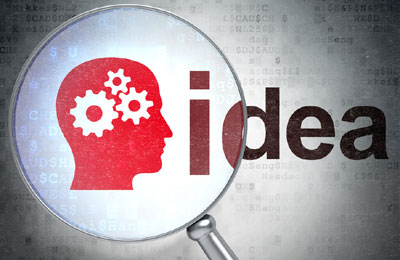
Five ideas for the future of advertising
Dubai, September 26, 2013
By Susan Wojcicki, SVP, Google
Media is in the midst of a sea change. News organizations are hiring developers and creating beautiful, interactive apps. Social platforms are empowering citizen journalists worldwide. Brands are becoming content creators.
Driving this change is the fact that new technology is being adopted faster than we have ever seen. Mobile is one example: devices are smarter and more powerful than ever. Time spent on mobile devices increased by nearly half-an-hour a day from 2011 to 2012 alone.
As wireless connectivity and digital screens proliferate, so does digital media: this year, people will spend more time online than watching TV for the first time ever.
As we think about the future of advertising in this new world, here are five ideas for how the ad world will look in the future, and how we can build a long term sustainable advertising ecosystem.
1. Choice: Ad views will be voluntary. People today have lots of choices - millions of websites, video channels, and apps are all just a click away. Timeshifting and on-demand content have fundamentally changed the way people consume media. In the future, forced ad impressions will no longer fit with this environment. Instead, ad formats that give people choice will be the most effective.
The first incarnation of this was search ads, by which advertisers supplied commercial information only on demand. The same is now happening for video and display advertising: user-initiated display ads and skippable video ads are becoming the norm. In this world, viewers can choose which ads they see, and the advertiser only pays for those engaged views.
When Dove went to launch their video Real Beauty Sketches, they used skippable video ads to find and connect with the people most interested in their brand. Even at three minutes long, it became one of the most-watched video ads on YouTube of all time and drove 8 million more views of additional Dove videos.
2. Connected: Ads will help people live their lives on the go. We already live in a world where people are constantly connected and switch seamlessly between devices. Marketers tell us that they want to set up their campaigns once, and then have the right ads reach the right people as they’re on the go, across all screens. Ads should be smart enough to be context and location aware - if someone walking around town searches for Chinese food, they probably want a map of nearby restaurants; if they do the same search at home on a laptop, they probably want a delivery menu. And when you check into a hotel, why can’t you get a coupon on your phone for the lobby cafe?
This philosophy motivated Google’s recent upgrades to its AdWords system, called enhanced campaigns. It enables marketers to create one campaign that delivers the right message in the right context - tailored for location, device and time of day. This type of model can provide great benefits for both users and advertisers.
3. Charm: Ads will be more interactive and beautiful at scale. Digital media offers an incredible creative canvas for brands. Our recent Art, Copy & Code project with Volkswagen turned driving into a social experience for sharing your road-trip experience. And earlier this year, Burberry Kisses let you send a digital imprint of your kiss to friends (with Burberry lipstick applied!). Countless other campaigns feel less like ads and more like experiences, but currently most of them are one-off implementations. The future of advertising involves beautiful ads, run at scale. Looking forward, the combination of HTML5, dynamic ad construction, touchscreens, and faster wifi will empower creatives in our field. As the technology improves, we’ll unleash a new creative revolution in advertising.
4. Control: Users will participate if we provide value and control. When we give people control over ads, we know that they value it. For example, Google’s Ad Settings lets people customise their advertising preferences. We’ve found that twice as many people modify their ads preferences to receive more relevant ads than choose to opt out of such ads. We need to develop more ideas that help people tell advertisers what they want, such as Mute this Ad, which enable people to tell us that they no longer want to see a particular ad campaign. To make ads relevant and sustainable in the future, people need to feel in control of their experience. Our industry’s current controls are world-leading, compared to other media and other industries, but there is still significant room for improvement.
5. Calibration: All ads will be measured but clicks will only be one measurement type. Google has developed powerful metrics to measure advertising over the last decade - advertisers can tally clicks, reach and the resulting conversions or purchases. This has redefined “direct response” advertising (where the goal is an immediate sale or click). But we need better metrics for brand advertising that can become as important as the click has become. One example: Brand Surveys in AdWords can measure, through online user surveys, the impact of video ad campaigns by measuring brand recall, brand awareness and favourability. These sentiments used to take weeks to measure; now we can do it precisely in real time. We’ve only started to develop these types of more qualitative measurement technologies and standards: their development is going to be a huge area of investment.
The most interesting and dynamic times are yet to come. As marketing and media move headlong into a digital future, our industry has a unique opportunity to build a future that helps drive our economy, and the web, forward.
* Susan Wojcicki is SVP, Advertising and Commerce, Google. The opinions expressed here are her own.







